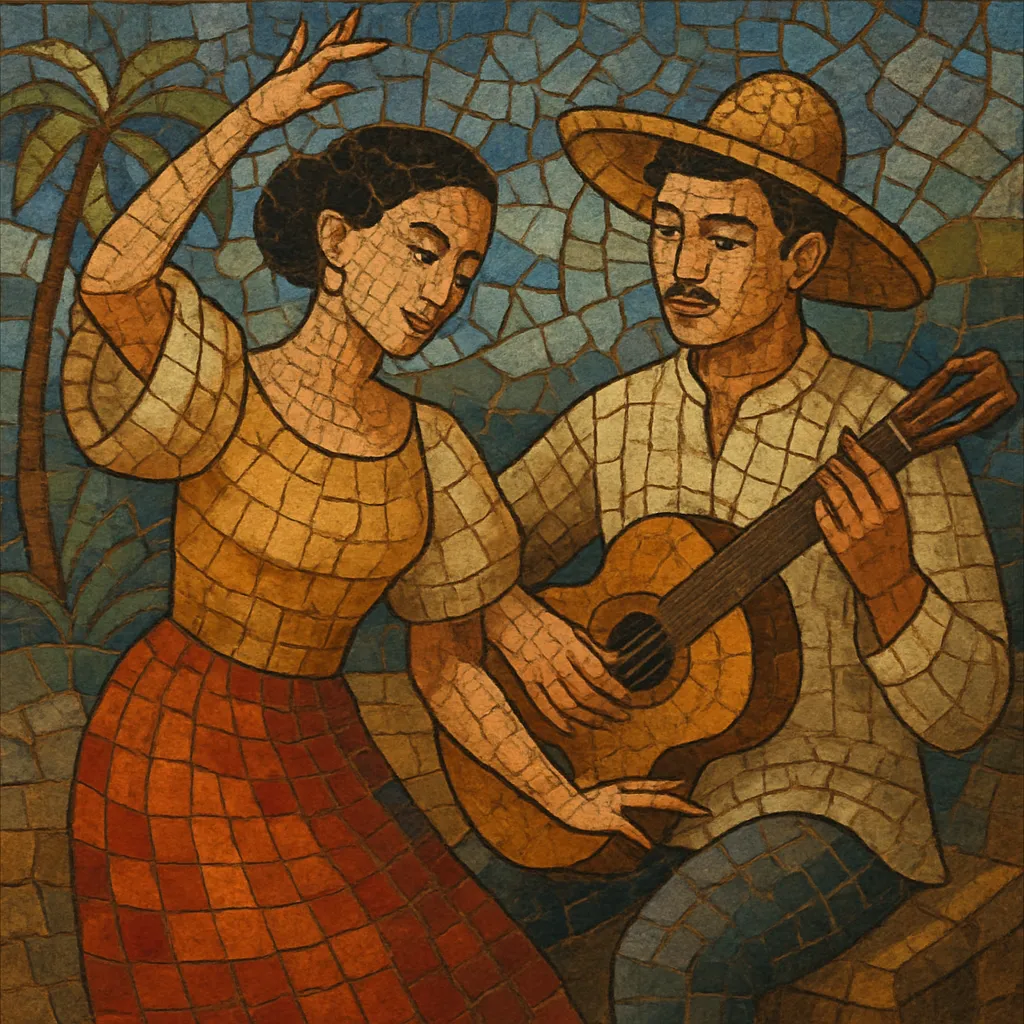Balitaw is a traditional Visayan song-and-dance dialogue from the Philippines, typically performed as a witty, flirtatious debate between a man and a woman. The two singers trade extemporized verses that court, tease, and challenge each other, often accompanied by guitar or a rondalla ensemble (bandurria, laud, octavina, guitar, and bass).
Musically, balitaw commonly uses moderate tempos in either a lilting 3/4 (waltz-like) meter or a habanera-like 2/4 with a dotted rhythmic feel. The harmony is diatonic and songful, favoring simple I–IV–V progressions, while the delivery relies on clear diction, rhetorical flourish, and playful repartee.
As a social performance at fiestas and community gatherings, balitaw is at once courtship ritual, poetic contest, and popular entertainment. Many beloved Visayan songs are sung in the balitaw style, which helped bridge folk tradition and later Filipino popular music on radio and records.
Balitaw emerged in the Visayas during the 1800s, when local poetic dueling and communal singing intersected with Hispanic musical influences. Serenade practices (harana), parlour music, and imported dance rhythms (notably the habanera and the waltz) shaped its musical language, while indigenous Visayan oral-poetic traditions supplied its improvisational, debate-like structure.
Initially a community entertainment at town fiestas and gatherings, balitaw featured a male–female duo engaging in a playful courtship debate. The audience often acted as a judge, rewarding clever metaphors, humor, and vocal skill. Accompaniment ranged from solo guitar to small rondalla ensembles, helping standardize its tuneful, diatonic style.
With the rise of radio and local record labels in the early–mid 20th century, the balitaw style entered the commercial sphere. Visayan composers and singers recorded iconic pieces that preserved the extemporizing spirit while adopting more fixed arrangements suitable for broadcasting and records.
Today, balitaw is kept alive by folk dance companies, rondalla groups, and Visayan singers who perform it on stage and in festivals. Its lyric wit, friendly rivalry, and graceful dance gestures continue to appeal to audiences, and its melodic-harmonic vocabulary influenced later Filipino popular music (OPM) and arranged folk repertoires.


